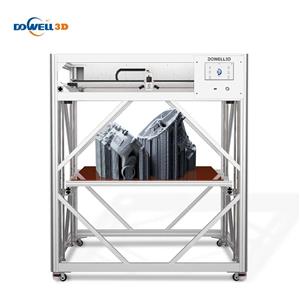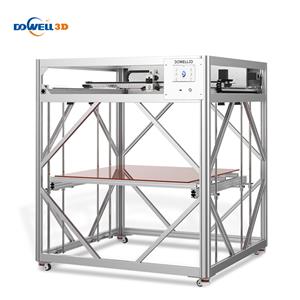3d printing material PETG, all you have to know
PETG filament is perfect for functional 3D prints. But what makes it that way and how do others compare?
PETG is an immensely popular 3D printing filament, widely used for its high strength, relative flexibility, and temperature resistance compared to the ever-popular PLA.
PETG provides the strength of ABS parts with even more flexibility and a printing experience more akin to the familiar and easy PLA process while being food safe too. It’s perfect for practical prints that need a little bit more give before breaking than PLA can offer. As a result, it displaced ABS as the second most popular 3D printing filament on the market.
But what exactly is PETG?
Are there other materials like it? And how the heck can we get this sticky mess printing well? We’re going to answer all those questions and more, so let’s get started with the basics
PETG stands for glycol-modified polyethylene terephthalate – similar to PET, which you may know from plastic water bottles – but an additional glycol is included in the polymer structure, hence the letter “G” after PET for “glycol-modified”. The result is a clearer, less temperature-sensitive material that’s easier to extrude than PET. However, it does have the unfortunate side effect of changing the recycling process. Although PET is widely recycled, PETG is not; the subtle differences between these materials create a troublesome contaminant in recycling facilities.
Still, it’s an excellent filament choice for printing objects that need to be sturdy, smooth, and exhibit low shrinkage. It’s also popular because PETG is considered food safe, but you should still read the fine print on any spool you buy to be sure.
Of course, it’s not all good news: PETG isn’t great at bridging because it’s super sticky. However, this does mean it has great layer adhesion. It’s also more prone to both heavy stringing and air-moisture absorption. But still, if you need a high-strength material and PLA or ABS just won’t cut it, standard PETG is a great option.
Though PETG is perhaps the best known in its family of filaments, it’s a variant of PET plastic – an exceedingly common material often found in water bottles and other single-use plastics. There are more variations of PET in filament than just the familiar glycol-added version, and all of them share many properties but with some important differences.
Pros & Cons
PETG is a good all-around material but stands out from other filaments given its flexibility, strength, temperature, and impact resistance. This makes it ideal for objects that might experience sustained or sudden stress, like mechanical parts, 3D printer parts, and protective components.
Additionally, since the material is considered food safe, it can be a good option for objects that will encounter food or drink. Just check your particular material to make sure first.
There aren’t many disadvantages to printing with PETG. Of the few, PETG is more prone to scratches and scuffs than PET is. It’s also true that, despite being comparable to PLA for its ease of printing, many makers do find PETG a bit trickier to print than other materials.
It certainly has its quirks, so you’ll need to find the “sweet spot” for your print settings. For example, you’ll likely find more clumping at the nozzle and stringing compared to other filaments.
PETG is also hygroscopic. If left out, it will absorb moisture from the air, which causes all sorts of problems that mostly culminate with a disappointing failed print. Be sure you keep PETG stored in a dry environment, whether it be a DIY or purchasable dry box.





